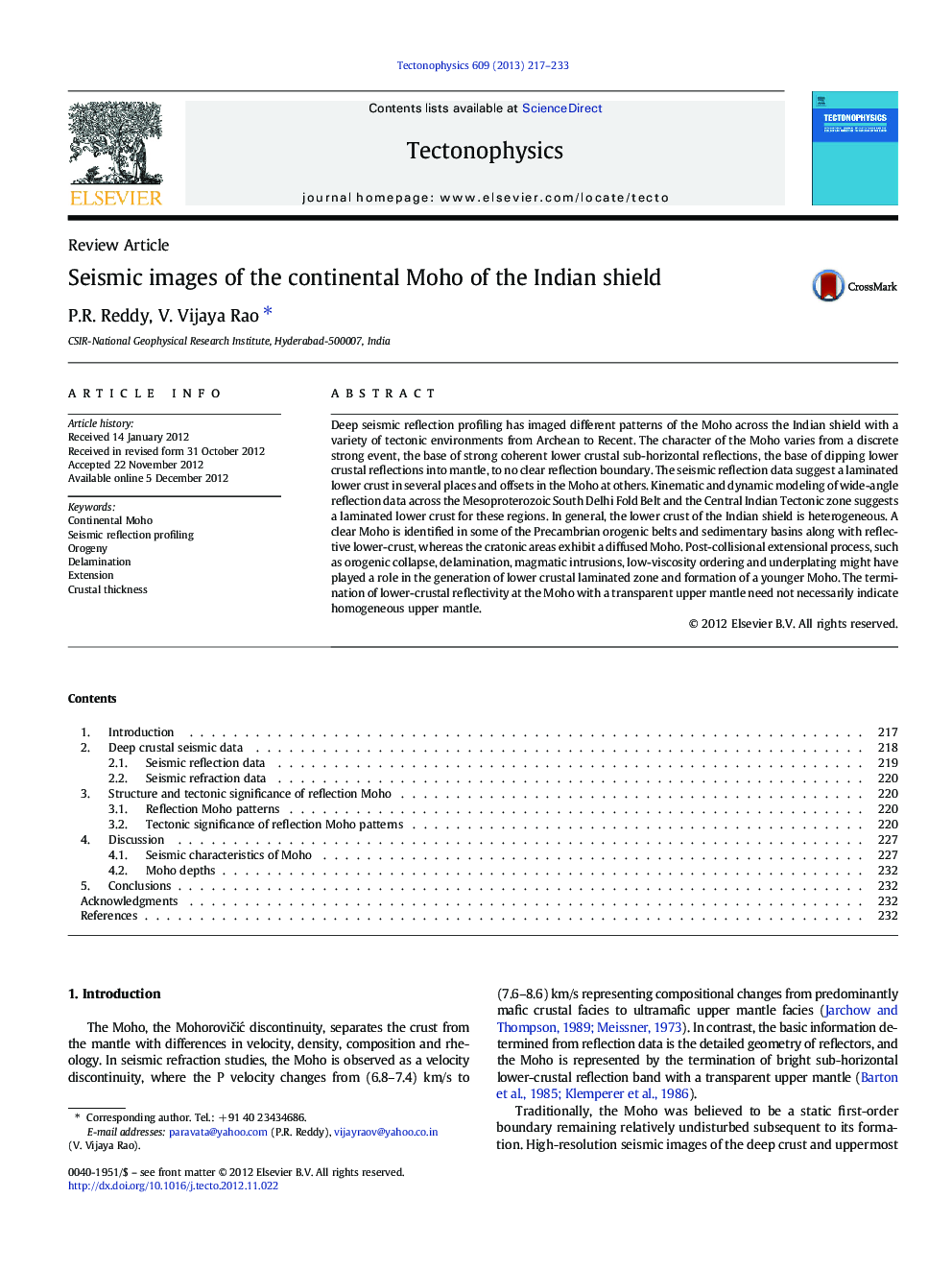| Article ID | Journal | Published Year | Pages | File Type |
|---|---|---|---|---|
| 6434074 | Tectonophysics | 2013 | 17 Pages |
Deep seismic reflection profiling has imaged different patterns of the Moho across the Indian shield with a variety of tectonic environments from Archean to Recent. The character of the Moho varies from a discrete strong event, the base of strong coherent lower crustal sub-horizontal reflections, the base of dipping lower crustal reflections into mantle, to no clear reflection boundary. The seismic reflection data suggest a laminated lower crust in several places and offsets in the Moho at others. Kinematic and dynamic modeling of wide-angle reflection data across the Mesoproterozoic South Delhi Fold Belt and the Central Indian Tectonic zone suggests a laminated lower crust for these regions. In general, the lower crust of the Indian shield is heterogeneous. A clear Moho is identified in some of the Precambrian orogenic belts and sedimentary basins along with reflective lower-crust, whereas the cratonic areas exhibit a diffused Moho. Post-collisional extensional process, such as orogenic collapse, delamination, magmatic intrusions, low-viscosity ordering and underplating might have played a role in the generation of lower crustal laminated zone and formation of a younger Moho. The termination of lower-crustal reflectivity at the Moho with a transparent upper mantle need not necessarily indicate homogeneous upper mantle.
⺠Seismic images of Indian shield identified different patterns of Moho boundary. ⺠Tectonic and magmatic processes responsible for dynamic nature of Moho are discussed. ⺠Both unmodified original and modified younger Moho features are identified from India. ⺠Recognizing Moho characteristics that are modified during compression and extension ⺠Termination of reflectivity at Moho need not necessarily indicate homogeneity in the upper mantle.
